Simplified EVAP System
I took this post from my build thread (Post 198), as I thought it may be helpful.
This is part of a larger fuel system refresh completed on my E30, more details in my build thread.
--
I've modified the Expansion tank / EVAP / fuel vapor / fuel overflow system.
The common approach is to remove the overflow tank and charcoal canister, and vent any lines to atmosphere.
Unfortunately, this leaves you with the smell of raw fuel as the tank vents. This is not acceptable for garage storage in my opinion. Obviously venting the gas tank directly won't do the trick.
It's not possible to simply cap off the vents for three reasons: Air needs a route to escape when filling the gas tank to prevent "burping", air needs to enter/exit the tank as the system heats and cools, air needs to enter the tank as fuel is consumed to prevent pulling a vacuum on the tank.
-
I decided to eliminate the overflow/evap tank above the rear passenger wheel, connect the main tank vent directly to the fuel filler neck, and connect the secondary vent directly to the charcoal canister.
-
This setup allows the tank to breathe as necessary, without the smell of raw fuel from the vehicle. It also means I only need to run a single hose through the rear wheel well to the filler neck.
The main disadvantage of this approach is that the gas tank can no longer be brimmed (filled to the top), as the liquid fuel will travel up the vent to the charcoal canister. In other words, it's no longer possible to fill the tank until the pump clicks off, and you loose a few liters of fuel capacity.
The OBC has a hidden function to show a digital display of how much fuel is left, I check this and fill appropriately when at the gas station.
--
Update:
Last summer, I filled the tank until the pump clicked off, with no apparent negative results. Repeated this test a few times.
That said, there is still the possibility that this will allow liquid fuel to be taken in by the charcoal canister, harming it's effectiveness.
--
Here are a couple of helpful diagrams. The original venting system (euro model) VS my modified approach:
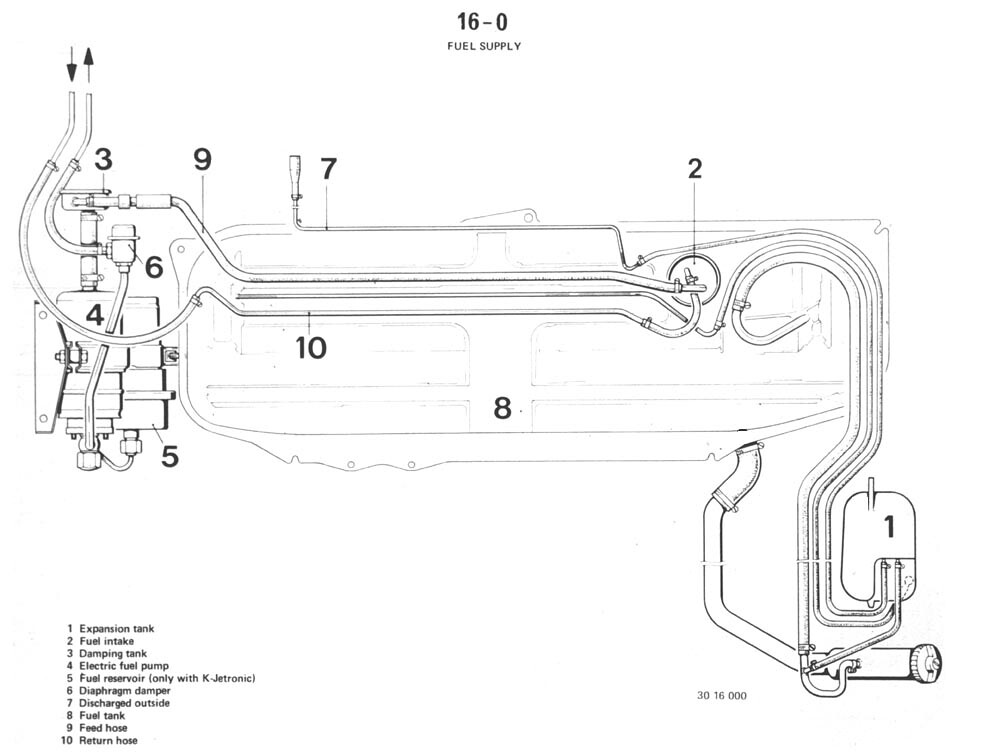
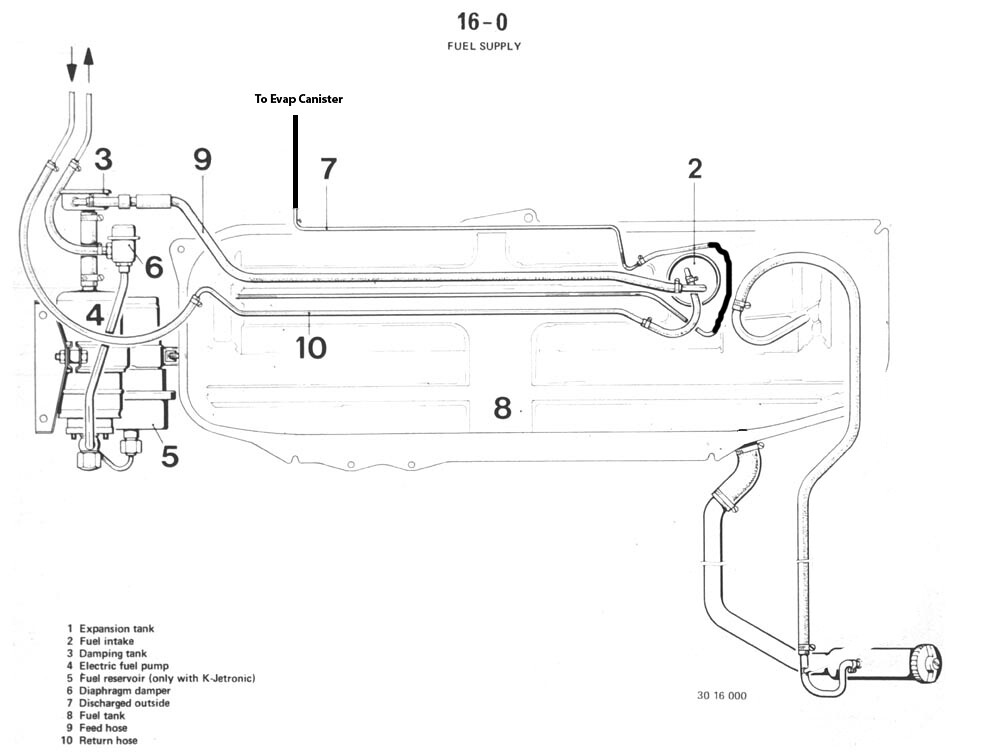
Unfortunately the original metal tube containing the venting hoses was destroyed from rust in my car. This was my solution. If you would like further details of the rust repair you can find them in my build thread.
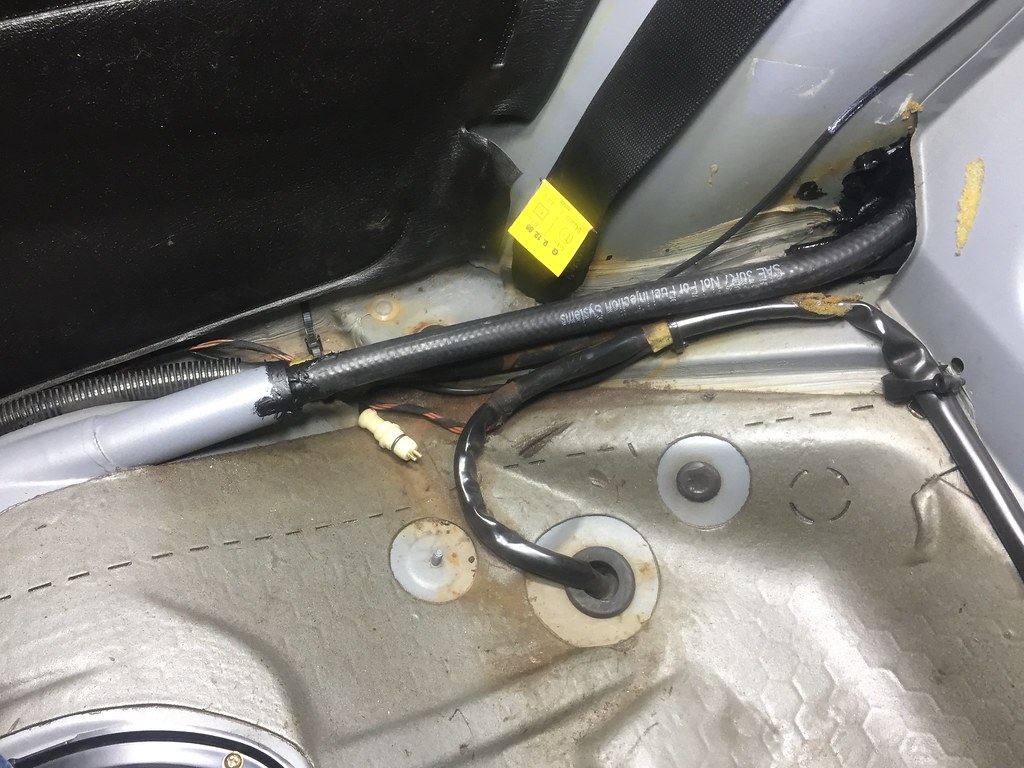
-
Freshly painted replacement fuel tank with pump installed (new gaskets) and hoses attached, ready for transplant into the car.
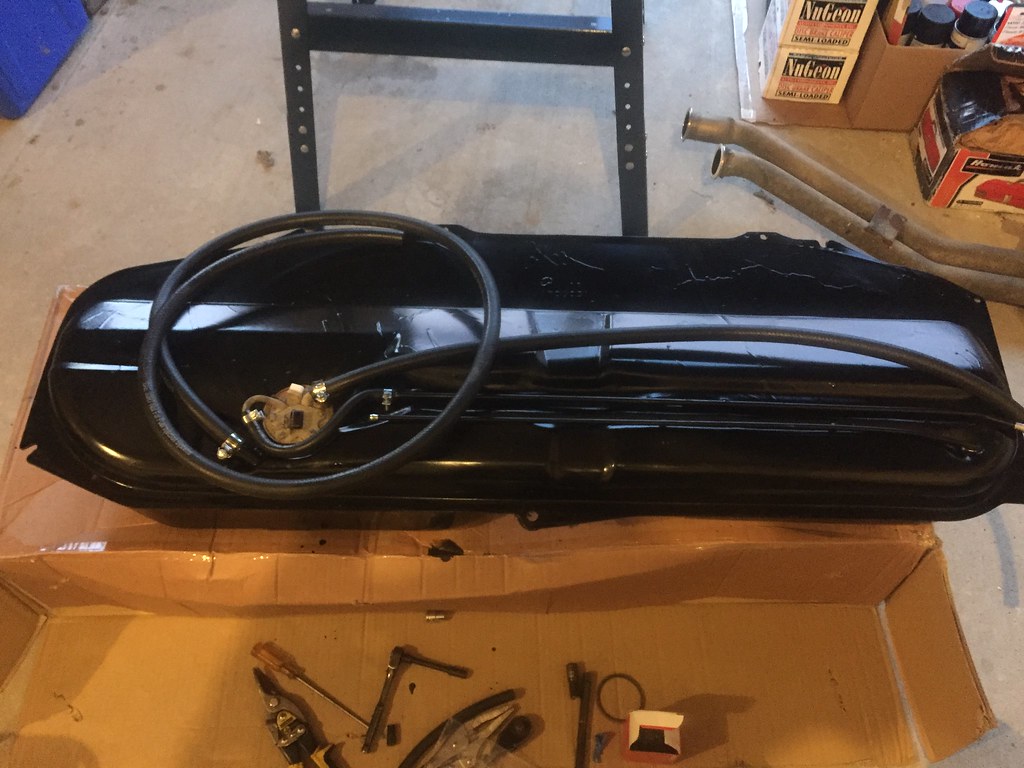
-
Fuel tank installed
Looped vent hose as shown in the diagrams. Gates liquid fuel hose was also used here, which necessitated a larger bend radius (compared to thinner EVAP hose) to avoid pinching.
I would recommend EVAP hose be used here for flexibility.
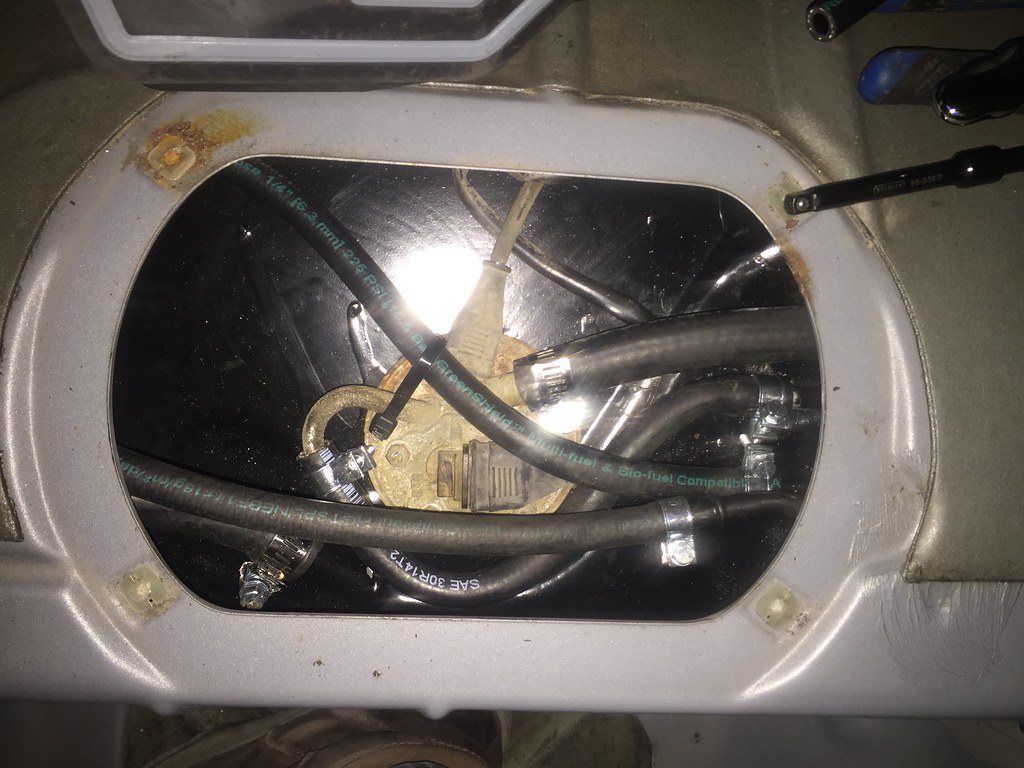
Please don't hesitate to ask any questions you may have!
I took this post from my build thread (Post 198), as I thought it may be helpful.
This is part of a larger fuel system refresh completed on my E30, more details in my build thread.
--
I've modified the Expansion tank / EVAP / fuel vapor / fuel overflow system.
The common approach is to remove the overflow tank and charcoal canister, and vent any lines to atmosphere.
Unfortunately, this leaves you with the smell of raw fuel as the tank vents. This is not acceptable for garage storage in my opinion. Obviously venting the gas tank directly won't do the trick.
It's not possible to simply cap off the vents for three reasons: Air needs a route to escape when filling the gas tank to prevent "burping", air needs to enter/exit the tank as the system heats and cools, air needs to enter the tank as fuel is consumed to prevent pulling a vacuum on the tank.
-
I decided to eliminate the overflow/evap tank above the rear passenger wheel, connect the main tank vent directly to the fuel filler neck, and connect the secondary vent directly to the charcoal canister.
-
This setup allows the tank to breathe as necessary, without the smell of raw fuel from the vehicle. It also means I only need to run a single hose through the rear wheel well to the filler neck.
The main disadvantage of this approach is that the gas tank can no longer be brimmed (filled to the top), as the liquid fuel will travel up the vent to the charcoal canister. In other words, it's no longer possible to fill the tank until the pump clicks off, and you loose a few liters of fuel capacity.
The OBC has a hidden function to show a digital display of how much fuel is left, I check this and fill appropriately when at the gas station.
--
Update:
Last summer, I filled the tank until the pump clicked off, with no apparent negative results. Repeated this test a few times.
That said, there is still the possibility that this will allow liquid fuel to be taken in by the charcoal canister, harming it's effectiveness.
--
Here are a couple of helpful diagrams. The original venting system (euro model) VS my modified approach:


Unfortunately the original metal tube containing the venting hoses was destroyed from rust in my car. This was my solution. If you would like further details of the rust repair you can find them in my build thread.

-
Freshly painted replacement fuel tank with pump installed (new gaskets) and hoses attached, ready for transplant into the car.

-
Fuel tank installed
Looped vent hose as shown in the diagrams. Gates liquid fuel hose was also used here, which necessitated a larger bend radius (compared to thinner EVAP hose) to avoid pinching.
I would recommend EVAP hose be used here for flexibility.

Please don't hesitate to ask any questions you may have!


Comment